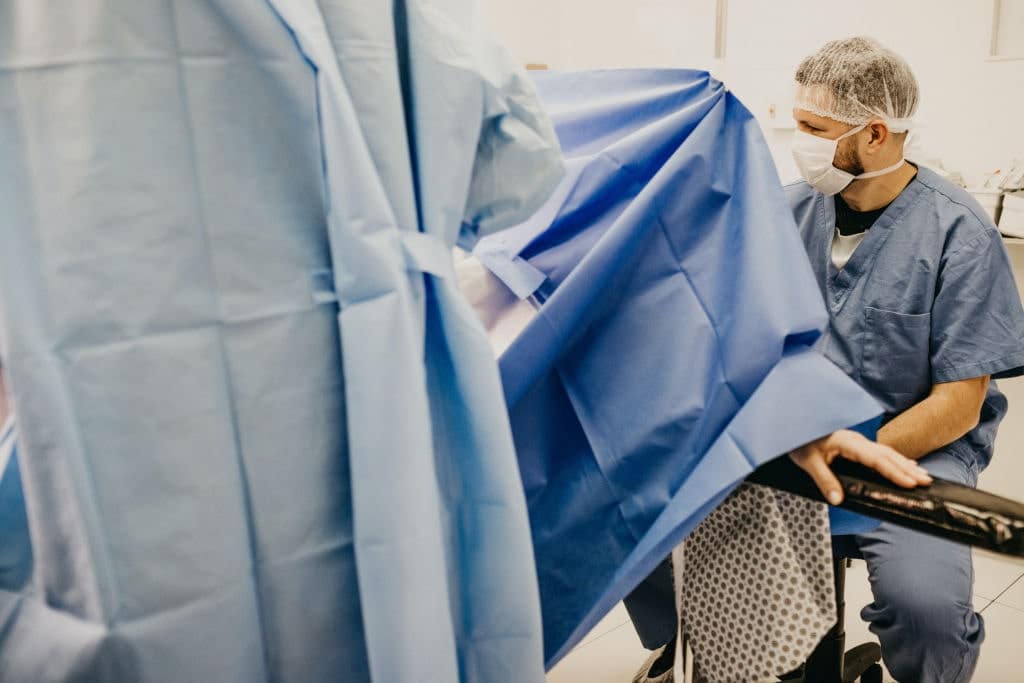Medical animation is an effective tool in the quest for justice when the case is related to medical conditions. You may ask, of what use is medical animation in hip replacement surgery?
Asides from the educational purpose such animation can serve, it can also bring to light possible foul play that could have occurred during the surgery.
Hip replacement is known as a safe and successful procedure.
Unfortunately, not all surgeries go on seamlessly. When there has been an error in surgery, medical animation can be used to animate the mistake in the procedure and portray the error.
Now, let’s dive into what hip replacement surgery is.
What is hip replacement surgery?
According to the Hospital for Special Surgery, hip replacement surgery is defined as “the removal and replacement of portions of the pelvis and femur (thighbone) that form your hip joint. It is performed primarily to relieve hip pain and stiffness caused by hip arthritis.”
It was further explained that this procedure is sometimes used to treat injuries such as a fractured or improperly growing hip and other conditions.
From this definition, you should note that the need for a hip replacement may arise due to arthritis or other man-made factors like car incidents, construction incidents, workplace injuries, and negligence.

What Are The Types Of Hip Replacement Surgeries?
There are three major types of hip replacements that can be carried out with regard to specific factors like age and the damaged sections. They include;
- Total hip replacement
This procedure, also known as total hip arthroplasty, is the most common hip replacement surgery carried out today.
During this surgery, worn out or damaged sections of the hips are noted and completely replaced by artificial implants.
In addition, the socket will be replaced with a plastic cup and may also include the use of a titanium metal shell.
The femoral head is also removed and replaced with a ceramic or metal alloy ball. To replace the femoral head, the ball is attached to a metal stem before being inserted into the top of the femur.
- Partial hip replacement
This procedure is also referred to as hemiarthroplasty. It involves removing only one side of the hip joint, the femoral head, whether the right or the left hip, instead of removing both joints as obtained in total hip replacement surgery.
This procedure is common among older patients who have suffered a fractured hip.
- Hip resurfacing
Hip resurfacing is a procedure common among younger patients.
In this surgery, only the femoral head and sockets are operated upon. In this surgery, more natural bone formation is preserved rather than replaced.
Using Medical Animation to Portray Mistakes That Can Fault An Hip Replacement Surgery
Some errors can occur during hip replacement surgeries, some of which are the surgeon’s fault and some which are not.
Whatever the error may be, medical animation can shed more light on the faults and help attain justice in a court of law. Here are some of the errors:
- Dangerous hip replacement implants
When hip replacement surgeries are carried out, some products are inserted into the body in place of the worn-out joint removed. Sometimes, the product that is in use may turn out to be further detrimental to the patient’s health.
In such a case, a product liability case can be brought before the court with the aid of medical animation to prove the harm that the product has caused.
An example of such is the case of Bass v. Stryker Corp.
In the case above, the plaintiff, who had a left hip replacement surgery, alleged that Stryker manufactured a hip replacement product used during the procedure. It malfunctioned and caused him injury.
- Using the wrong method
The traditional or invasive method can be used when conducting hip replacement surgeries. The perfect procedure to imbibe can then be considered when each case is observed.
If the wrong method is used, an error would be inevitable, thus causing harm to the patient.
- Lack of expertise
Before hip replacement surgeries can be carried out, the surgeon must possess a certain level of expertise or team with another surgeon with the skills they lack. When there is a lack of relevant skills, there can be a risk of harm to the patient. Medical animation can be used to illustrate this to the jury.
Conclusion
Medical animation, when used appropriately, can help fuel your case when related to hip replacement surgery. It can be used to illustrate the right and wrong way hip replacement surgery is carried out. However, the services of an experienced legal animation company must be acquired to get an exceptional medical animation.






